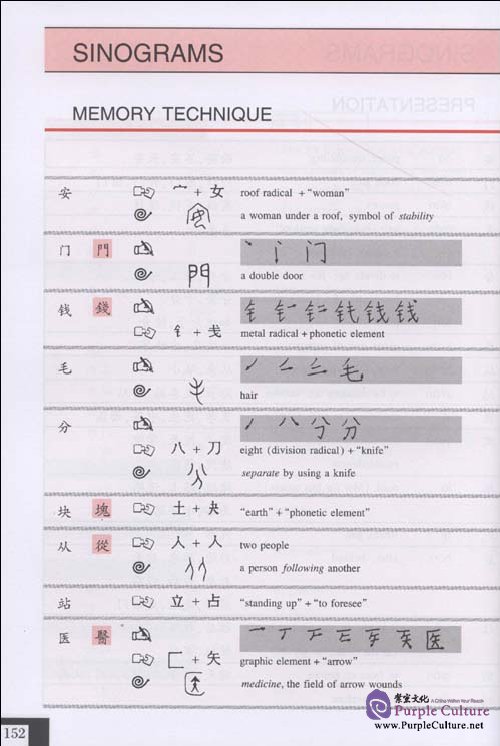Details
This
introductory course (in 2 volumes) is compiled by Joel Bellassen, an associate professor at the Seventh University of Paris, and Zhang Pengpeng, a senior lecturer at the Beijing Language and Culture University. It not only serves as a textbook but also as a guide which, through a variety of routes (etymology, semantics, linguistics, graphics and culture), can help students think of Chinese. The 400 characters featured in Vol. I will enable students to recognize at least 70% of the characters used in books and newspapers.
Sample Pages Preview


"Once upon a time in the north of China, there lived a farmer who, wanting to has-ten the growth of his new shoots, went every morning to pull them up slightly. After ashort time the shoots withered and died. "
The ancient wisdom of the Chinese teaches us through this story that we must notfight against the nature of things. This is the first idea that guided me in devising this method. Many texbooks (Chinese ones included) westernise and "alphabeticise" Chi-nese. It is surely far more appropriate, however, to present the language as it really is, toreveal its own logic, its own spirit.
It is generally agreed that learning Chinese is a question of memory. Memory, however, is afraid of emptiness; it needs supports. Any method of learning Chinese mustbe constructed accordingly, providing where possible the essential elements for learningevery Chinese character or sinogram (we have borrowed this new term from Delphine Weulersse and Nicolas Lyssenko, authors of Methode programm6e du chinois moderne).
These supports will be visual (the student will readily observe a character's origi-nal design), auditory (the student who remembers things when he hears them will benefitfrom saying out aloud the elements that compose a character) and gestural (the strokeorder and positioning).

